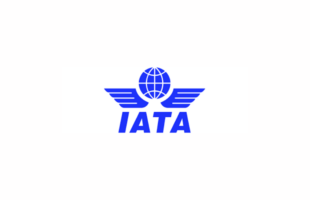IATA, the International Air and Transport Association, released the latest airlines financial monitor. Here are the key points:
– Worldwide airline share prices rose 3 per cent in August compared to July, slightly ahead of the broader market on further easing in fuel prices;
– Initial Q2 financial results show strong gains for US airlines’ performance, but declines in Asia Pacific due to cargo revenue weakness and cost pressures for Chinese carriers from the depreciating Yuan;
– Jet fuel prices eased slightly in August as a weakening demand outlook pushed crude oil prices down to a 15-month low;
– US passenger yields are up after declines in Q1, but weakness continues in other regions;
– Air travel volumes continue to expand steadily and air freight demand recorded a solid increase in July, supported by improving conditions in Asia, including a rebound in trade volumes;
– Expansion in available seats moderated in July, but continues to exceed growth in demand;
– Passenger load factors fell on the back of strong capacity expansion, but air freight load factors have now reversed recent declines.
Airlines earn a majority of revenues in Q2 and Q3, so the expectation is for solid results at this time of year. IATA’s sample of 50 airlines shows that airlines were also able to improve financial performance on the year ago period, at both the operating and net profits levels. The improvement has been driven by the performance of North American airlines. By contrast, in Asia Pacific, a combination of weakness in cargo revenues as well as rising cost pressures for Chinese carriers due to a depreciating local currency have had negative impacts on regional financial performance.
Crude oil prices fell a further 4%
Crude oil prices fell 4 per cent in August compared to July. Current price levels are down 11 per cent on the most recent (mid-year) peak. Jet fuel prices remain very close to US$120/bbl, but have also fallen by 4 per cent in August compared to July. Q The recent decline in crude oil prices has come as a result of a weakening demand outlook. There are signs of weakening demand in Europe as well as Asia. The Eurozone economic recovery has been stunted by the Russia-Ukraine crisis and ensuing EU sanctions. Despite positive Q2 developments for the Chinese economy, downside risks to accelerating growth remain.
Air freight demand rises strongly
Air freight volumes increased strongly in July compared to June. Improvements in world trade and business activity flattened in Q1, but latest data suggest improvement in some regions. The solid industry performance in July was driven by Asia-Pacific carriers, where trade volumes have rebounded after decline throughout Q1.
Air freight capacity stabilises
The rise in passenger capacity came mostly through a strong increase in ASKs on international markets in July compared to June. Growth in demand was weaker and resulted in a fall in load factors over the month. Air freight capacity stabilised in June with a slight decline compared to May. But the trend over recent months has shown resumption in growth in AFTKs, which is consistent with renewed signs of improvement in the demand environment.
Freight loads stabilise
There was a 0.6 per cent pt increase in air freight load factors in July compared to June, which has reversed the declining trend seen during the recent past months. The pick-up in demand in July compared to June was met with a contraction in capacity, which caused loads to increase solidly.






